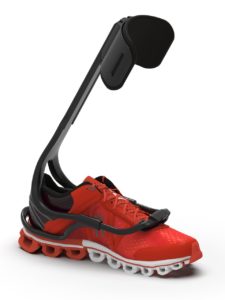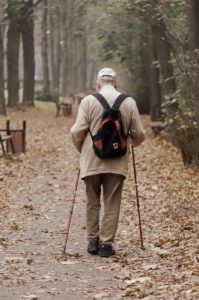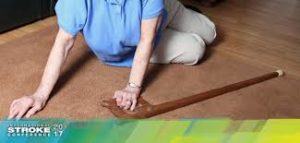The Xtern : A Game Changer for Foot Drop Patients
NeuroRehab Team
Tuesday, February 9th, 2021

When François suffered multiple injuries from a snowmobile accident in 2001, he knew his life would change forever. After fracturing both legs and knees, he was left with a complete foot drop on one side. Over the years, he tried various ankle and foot orthosis (AFOs), but couldn’t find the one that would allow him to get his life back. That’s how Turbomed was born.
Walking and Stroke Recovery: What You Need to Know
NeuroRehab Team
Saturday, January 25th, 2020
Electrical StimulationFoot Drop BraceLegMobilityNeuroplasticity

A stroke can impact any number of life skills. But the ability to walk can be one of the most significant. Many people identify walking as an important goal after they experience a stroke. This makes sense because walking is related to so many daily routines. Every stroke survivor is different. Some stroke survivors might need help to walk a few feet. Other individuals might recover significantly and be able to walk long distances. This article will provide post-stroke walking education for a range of skill levels.
Mobility and Leg Recovery Following Stroke and Other Neurological Injuries
NeuroRehab Team
Friday, August 2nd, 2019
BiofeedbackBody Weight SupportContracture SplintElectrical StimulationExercise AidsFoot Drop BraceLegLeg BikeMobilityNeuroplasticityRoboticsVirtual Reality
![]()
One of the most common impairments resulting from stroke is paralysis, which can affect a portion or the entire side of the body. Problems with body posture, walking, and balance can be significant. Two thirds of the patients are unable to walk without assistance in the first week after stroke (Jorgensen HS et al. Arch Phys Med Rehabil, 1995). Approximately 35% of survivors with initial paralysis of the leg do not regain useful walking function (Hendricks HT et al. Arch Phys Med Rehabil, 2002). Although 65% to 85% of stroke survivors learn to walk independently by 6 months post stroke, gait abnormalities and poor endurance persists through the chronic stages of the condition (Wade DT et al. Scand J Rehabil Med, 1987).
Improve Functional Mobility With Lower Extremity Stroke Technology
NeuroRehab Team
Tuesday, December 26th, 2017
BalanceBody Weight SupportElectrical StimulationExercise AidsFoot Drop BraceLegLeg BikeMirror TherapyMobilityNeuroplasticity
One of the most common impairments resulting from stroke is paralysis, which can affect a portion or the entire side of the body. Problems with body posture, walking, and balance can be significant. A patient’s rehabilitation should start as soon as he or she is stable. That could be anywhere from a couple of days to a few weeks or longer. Established guidelines, as well as a huge body of literature, insist that the earlier therapy is initiated the better.
5 “Out-of-Shoe” Foot Drop Braces You Should Know About
NeuroRehab Team
Wednesday, July 12th, 2017
Whether you suffered a stroke, living with multiple sclerosis (MS) or experiencing another neurological disorder, experiencing Foot Drop can be quite a struggle. Finding the right support to maintain foot clearance when walking can be challenging at best. Areas of concern include size, comfort, durability and effectiveness.
Listed below are 5 comfortable “out-of-shoe” Foot Drop Braces that are currently available on the market. Although the below braces may be more comfortable to wear, it is important to realize that not everyone will qualify for these lower profile ankle supports. Individuals will need to consult with a healthcare professional to make the most appropriate choice for their needs.
Neuro Rehab Products. What’s right for me?
NeuroRehab Team
Thursday, April 27th, 2017
Arm and HandBalanceCognitionDysphagiaFoot Drop BraceLegNeuroplasticitySubluxation SlingsVision

Listed below are various clinical product categories that you may have learned while in therapy. Feel free to click on any category to see a list of products that may be appropriate for your needs.
Risk for Falls Following Stroke
NeuroRehab Team
Monday, April 24th, 2017

Studies have shown that stroke survivors are twice as likely to fall following a stroke and more than three times as likely as the general population to fall multiple times. About 40 percent of stroke survivors have serious falls within a year of their stroke.
Stroke/Neuro Products That Improve Strength and Function
NeuroRehab Team
Monday, April 3rd, 2017
Arm and HandCognitionCommunicationFoot Drop BraceLegMobilityNeuroplasticityVision

It is true that recovering from a stroke will be an uphill battle for many, however, it is also accurate that the latest research findings regarding neuro recovery are more promising than ever before. How serious are you with embracing evidence into your practice? As a clinician, are you stuck using numerous theoretical-based treatment concepts that have not scientifically been proven to be effective?
Listed below are some of the common interventions supported by research that have shown positive results. How many of the below techniques are in your current therapy toolbox? If just a few, then why?
Foot Drop Following Stroke. What are the Treatment Options?
NeuroRehab Team
Friday, July 15th, 2016
Electrical StimulationFoot Drop Brace

The National Institute of Neurological Disorders defines foot drop, also known as dropped foot or drop foot, as “the inability to raise the front part of the foot due to weakness or paralysis of the muscles that lift the foot.” Consequentially, people who have foot drop scuff their toes along the ground; they may also bend their knees to lift their foot higher than usual to avoid the scuffing, which causes what is called a “steppage” gait.
Stroke Treatment and Recovery. Are You Serious?
NeuroRehab Team
Friday, June 24th, 2016
Arm and HandFoot Drop BraceLegVision

It is true that recovering from a stroke will be an uphill battle for many, however, it is also accurate that the latest research findings regarding neuro recovery are more promising than ever before. How serious are you with embracing evidence into your practice? As a clinician, are you stuck using numerous theoretical-based treatment concepts that have not scientifically been proven to be effective?
Listed below are some of the common interventions supported by research that have shown positive results. How many of the below techniques are in your current therapy toolbox? If just a few, then why?

